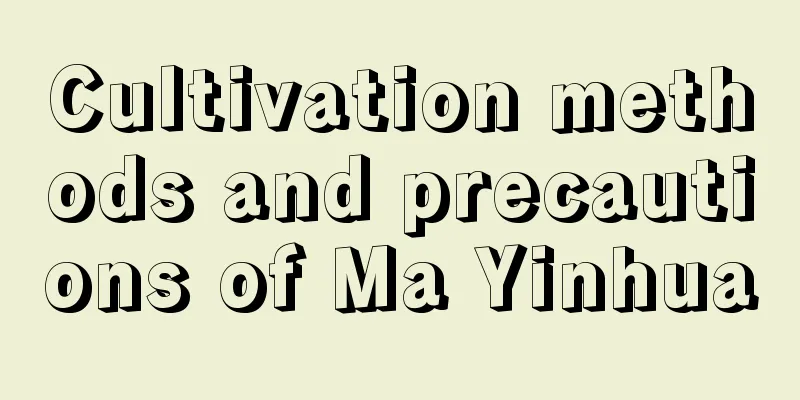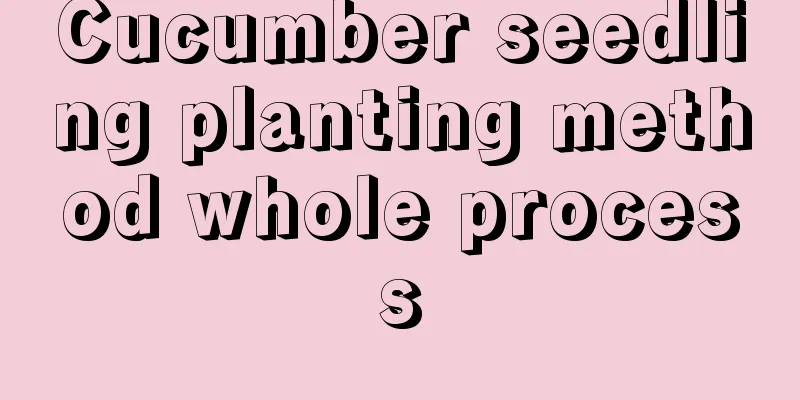Cultivation methods and precautions of Ma Yinhua

1. Maintenance methods1. Temperature: The temperature suitable for its development is between 15 and 25 degrees. The temperature must be controlled when breeding in the north, especially in winter. It is best to overwinter indoors. 2 Fertilization: Before flowering in spring, in order to promote the development of flower buds, you can use phosphorus fertilizer once a month. Topdressing is also needed after the flowers fade. The fertilizers are mainly phosphorus and nitrogen fertilizers. You can use homemade fermented fertilizers at ordinary times. It should be noted that the fertilizer must be fermented. If it is not fermented, the fertilizer will continue to ferment after contacting the soil. A lot of heat will be generated during the fermentation process, which may burn the plant and be detrimental to its growth. 3. Watering: It likes a slightly humid growing environment. An overly dry environment will affect its growth. The air in the north is very dry. During the breeding process, it is necessary to frequently spray water around it to keep it moist. Generally speaking, if the temperature does not exceed 30 degrees, water it once every two days. After the temperature exceeds 30 degrees, water it every day. It is best to water it at night so that it can give it enough time to fully absorb the water. 4. Light: It is not resistant to exposure to the sun and needs proper shade when exposed to light. The daily light exposure time should be about five hours. When exposed to light, it is best to use diffuse light. 2. Breeding techniques1. Reproduction: It can be propagated by cuttings. In May and June every year, choose semi-lignified branches, cut off the lower leaves, leaving only three leaves on the top, then put the cut point into rooting water for 30 seconds, then take it out and dry it. After drying, you can insert it into the cultivation medium. After inserting, place it in a cool place for maintenance, and it will grow roots in about two weeks. 2. Pruning: In order to encourage the plant to bloom more and grow more new branches, pinching is generally used to promote the sprouting of new buds. In order to increase commercial value and aesthetics, the excess branches need to be pruned after the flowers fade in spring. 3. Problem Diagnosis1. Leaf swelling disease: After the plant is infected with leaf swelling disease, you can use 1:100 Bordeaux liquid to spray its branches and tips once every seven days. 2. Pests. If there is black sticky substance attached to the back of the branches and leaves of the plant, it means that it is infected with the crown bug. To eliminate this pest, you need to spray it with omethoate once every half a month. IV. Other issues1. Toxicity: non-toxic. 2. Edibility: It cannot be eaten directly, but it can be used for medicinal purposes. |
<<: Green diamond breeding methods and precautions
>>: The cultivation methods and precautions of wheat plum
Recommend
The growing environment and local conditions of the cocoa tree
Cocoa tree growth environment and conditions The ...
Use it for cuttings of green radish, and it will take root as soon as you cut it, and it will be difficult to fail.
The principle of sponge cuttings From the charact...
What to do if the banyan tree has root rot
1. Remedies 1. First, you need to remove it from ...
What are the cultivation methods and precautions of Qilin Flower?
Introduction of Kylin Flower Euphorbia is a climb...
When to plant zucchini?
Zucchini planting is divided into two main period...
The difference between adzuki beans and red beans, which one is better for removing dampness
1. Difference 1. Morphology: The colors of the tw...
How to propagate golden thread vine
Division Time: Spring and autumn, but not every y...
Why are some leaves of the green radish in a pot particularly green?
1. Harm caused by small amount of fertilizer If s...
What to do if ivy leaves dry up
Watering Improper watering Improper watering is a...
Sugarcane planting time and maturity time
Sugarcane is grown in Fujian, Guangdong, Hainan, ...
These flowers make people want to take them home! Experts are planting
Lupine Lupine is what we often call lupine. There...
Which city's city flower is osmanthus? What is its flowering season?
1. Which city's city flower is this? Osmanthu...
Cultivation methods and precautions of Golden Phoenix
1. Soil Goldenrod has low requirements for soil a...
How to pinch the tip of bougainvillea
1. What is pinching? Every plant has buds at the ...
High-yield potato planting method
Open-field cultivation is the most common method ...









